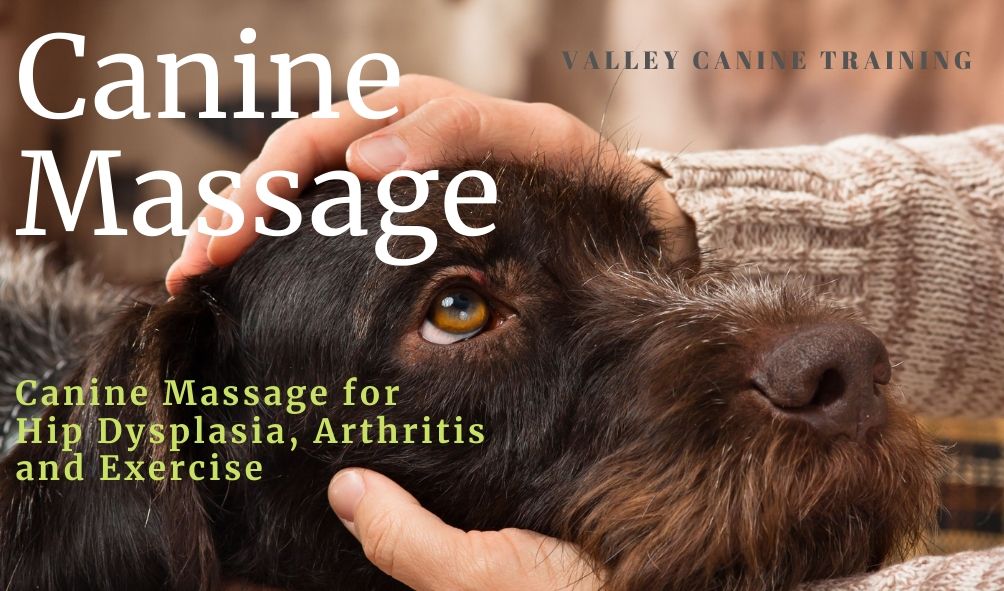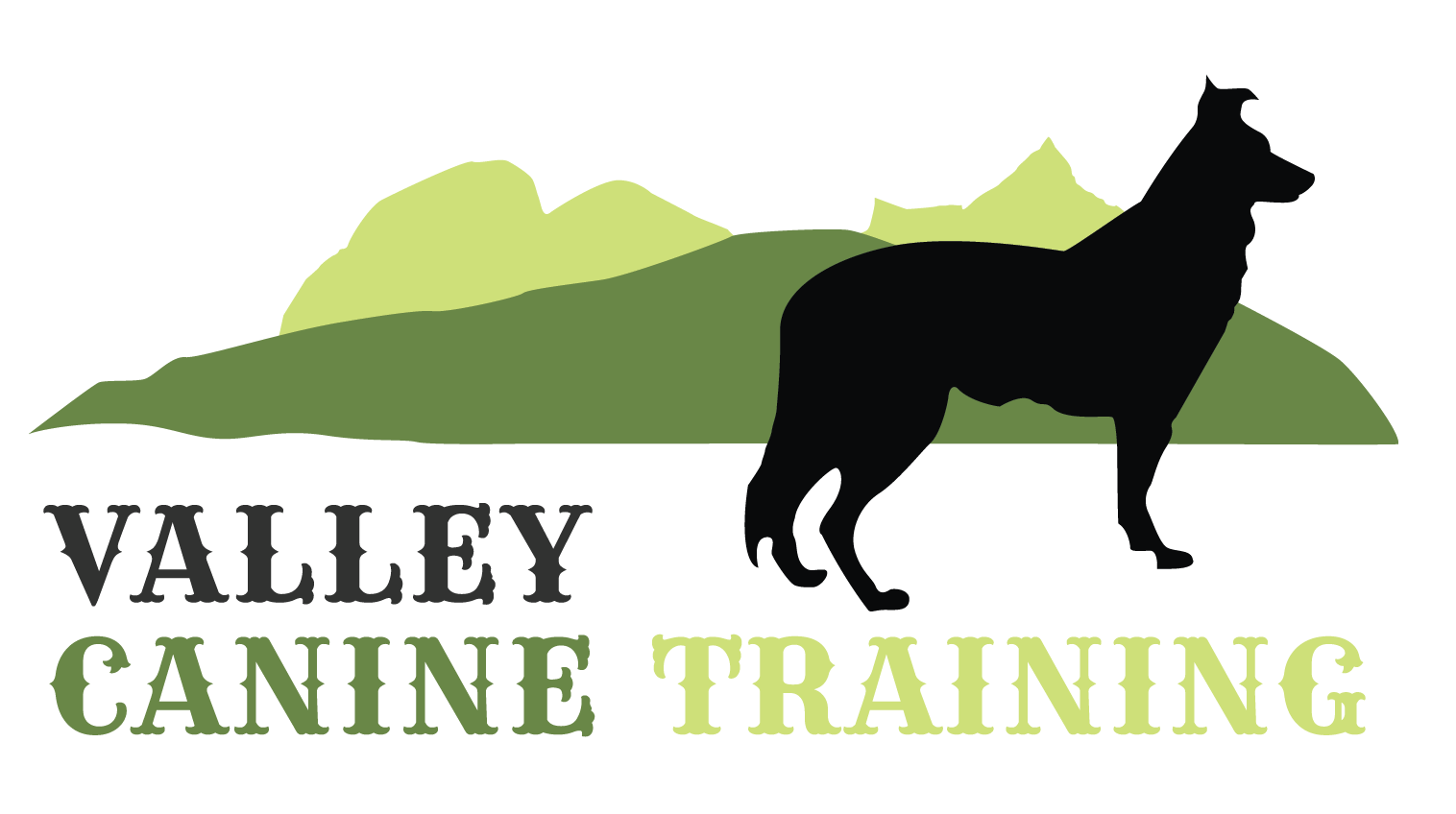
Canine Massage for Hip Dysplasia, Arthritis and Exercise
By: Victoria Regan CDT
Being a dog owner of a dog with severe hip dysplasia, I’ve learnt over the years how beneficial massage, physiotherapy and acupuncture can be for a dog in pain!
Unfortunately canine physiotherapists and acupuncture for your dog can be expensive, and not everyone can afford these types of services for their dog. Also not every dog enjoys or can mentally handle physiotherapy or acupuncture, due to anxiety or fear of an unfamiliar person manipulating and working on their body. One thing that most people forget is “you have hands”, which means you can administer canine massage yourself for your own furry friend! Your dog will also be way more comfortable with you massaging them versus a stranger.
Doing canine massage yourself not only saves you money but also may dramatically increase your dog’s quality of life. A dog which is stiff and sore won’t be able to do much exercise, and as our dogs get older their walks tend to get shorter, usually due to arthritis and muscle pain.
But what if we could improve your dog’s quality of life? Their mental health? Their blood circulation? Their immune system? What if we could possibly increase their quality of life too?
Research has shown that canine massage can decrease pain and discomfort, encourage relaxation and tension release, reverse muscle atrophy, relieve pain from arthritis and hip dysplasia, increase circulation and even boost immunity!
Pain and discomfort can even trigger or worsen behavioural issues. Did you know that some behavioural issues can be directly related to pain? If you suspect that your dog is in extreme pain or discomfort, we encourage you to visit your vet as soon as possible and get a second option from a trainer on pain related behavioural problems. Also keep in mind that canine massage is not a substitute for veterinarian medical care.
Canine massage not only helps relieve pain in your dog but it is also shown to increase the bond you have with your dog. It will also help with desensitization to touch and to top it off, it will build trust in your canine relationship!
So, you’re probably wondering “How do I do canine massage? How do I do it safely?” Here are the answers…
1. First help your dog get comfortable: Create a calming environment with little distractions. Have your dog lay on their bed and relax, it may take your dog a bit to relax at first, especially if you have a wiggly puppy. We recommend doing canine massage after a walk or in the evening after your dog has been exercised, to ensure a better chance of calmness.
2. Make sure you are calm and present: If your mind is wandering or running at 100 kilometers a minute, and all you can think about is the house work that needs to be done or stressing about work, then your dog will pick up on your tension and stress. In turn it will be harder for your dog to relax. So make sure you are present and in the moment, calm and focused strictly on your dog and the time that you’ve chosen to spend with them. This will also help with the bond and trust building that is achieved through canine massage. You can try taking some deep breaths, setting a timer for 20 or 30 minutes which may help you forget about having to check the clock. You can even put some lavender essential oils on your wrists to help calm yourself and also calm your dog. (Note: If you are wanting to use any type of scents or essential oils we recommend learning about the effect of these strong scents before using them on or around your pets.)
3. Before you start….know the signs of discomfort in your dog: You can gauge how much pressure to use by observing your dog. If your dog lifts their head, looks at the spot your massaging, moves away from your hands or you, or just generally seems uncomfortable, then decrease the pressure your using. Other pain signals are, licking, panting, whining, yelping, excessive yawning, withdrawing away from your hands, ears pulled back or widened eyes. Also do not hug or lean into your dog when massaging them, as this will make them feel uncomfortable and trapped, which will trigger stress.
4. Once your dog has settled, you can start with some light and slow petting: Pet your dog and gently lengthen their limbs. You may even want to talk to them in a calm voice or even sing to them. Remember this is your time to bond and connect with your dog. Also, for dogs who are anxious or have nervous behaviours, canine massage will help your relationship as it may provide answers on how to calm your dog down in other situations too!
5. Massage Techniques: There are thousands of different massage techniques but some basic ones that you can try with your dog include the following below.
- Where to massage? Neck, shoulders, hips, back and legs
- You can start with: a belly rub to calm your dog down
- Face massage: Rub between your dogs’ eyes and around their forehead. This will relieve stress and encourage them to relax and lay their head down.
- Long flow-like gliding strokes all over (Effleurage): Similar to petting but with more pressure, this type of contact encourages blood flow to the tissues and muscles. It also encourages your dog to relax their body. Start at your dog’s head or neck and work your way down. Keep in mind that some dogs don’t enjoy their paws being touched, if this is the case for your dog, then skip the paws in order to decrease a stressful response.
- Rubbing/Pressing: Use your full hand/palm to rub and press. You don’t want to “dig in” with your fingers as this can cause to much pressure in one spot. If your dog has hip dysplasia, use less pressure around the joint spaces/hips.
- Softly twisting the skin: This increases circulation to the space between the skin and muscle and encourages blood to rush to this location.
- Massage along the spine (Petrissage): You can do a soft kneading motion on both sides of the spine and work your way from tail to neck. This is especially good for dogs who are long and short, such as dachshunds and corgis. This breed often has a middle spine which experiences less support, due to their unique body shape.
- Squeezing: If your dog is comfortable with you touching their legs and paws, then you can gently squeeze their legs and paws and give them a nice foot rub. If you have paw wax this is a great time to apply paw wax to the pads of their paws, which will help with cracking paws too. I like to end my dogs’ massage with paw wax and they always like to lick it off after. I make sure to use a natural paw wax that I make myself. – Find our blog post on “How to Make Your Own Natural Paw Wax” (coming soon…)
We hope you enjoyed this article about “Canine Massage for Hip Dysplasia, arthritis and exercise”.
To read more articles by Valley Canine Training, check out our Dog Blog here. –> https://www.valleycanine.net/dogblog/
References:
- https://bncpet.com/blogs/news/the-latest-in-canine-therapy-dog-massages-top-tips-and-tricks-to-help-relax-your-dog
- https://www.petmd.com/dog/pet-lover/4-simple-dog-massage-therapy-techniques
Video:
